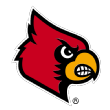Welcome to our final look at a weighty question in this transfer-heavy era of ours: Just how important have transfers been — whether due to addition or subtraction — to each program in Division I’s top seven conferences?
Last week, we considered the Big Ten. Before that, it was the Big East, AAC, Big 12, Pac-12 and SEC. Today we turn our attention to the ACC.
Note that we define a “transfer in” as someone who actually played minutes previously at a different four-year program. Conversely, a “transfer out” is simply a player who saw time at the ACC program in question.
That’s all pretty straightforward, right? Here are the most significant ACC transfers of the modern era.

Best transfer in: Joe Trapani, 2008-11
Trapani and BC mainstays like Reggie Jackson, Corey Raji, Biko Paris and Josh Southern bridged the Al Skinner and Steve Donahue eras. Unlike his teammates, however, Trapani arrived in Chestnut Hill after first playing for another program (Vermont). In three seasons with the Eagles, he made 98 starts and scored better than 1,300 points.
Most significant transfer out: Ryan Anderson, 2011-2014
Anderson earned first-team All-Pac-12 honors as the leading scorer for an Arizona team that entered the 2016 NCAA tournament as a No. 6 seed. Prior to his stint with Sean Miller and the Wildcats, though, he was a three-year starter at BC over what turned out to be the final three seasons of Donahue’s tenure as head coach.

Best transfer in: Marcquise Reed, 2016-2019
Reed’s stiffest competition for the title of Clemson’s “best transfer in” comes in part from his own teammates: Tigers of the late 2010s like Elijah Thomas, Shelton Mitchell and David Skara. Nevertheless, Reed earns the nod here based on his third-team All-ACC membership in a 2018-19 season in which the competition for all-conference recognition was guys like Zion Williamson, RJ Barrett and De’Andre Hunter. Other notable transfer arrivals at Clemson have included Avry Holmes, Tevin Mack, David Collins and Nick Honor.
Most significant transfer out: Tony Stockman, 2000-2002
Stockman alternated starting and coming off the bench at Ohio State, playing one season each under Jim O’Brien and Thad Matta. Whomever the coach was, and no matter the manner in which Stockman entered the game, he always had a green light. Before he was letting the ball fly as a Buckeye, Stockman averaged 12 points over two seasons playing for Larry Shyatt at Clemson.

Best transfer in: Dahntay Jones, 2001-2003
The onetime Rutgers star was a starter on the 31-4 Duke team that featured Jay Williams and Carlos Boozer and earned a No. 1 seed, only to lose to Indiana in the 2002 Sweet 16. The following year, Williams and Boozer were gone, and Jones became the Blue Devils’ leading scorer (just ahead of a first-year teammate named J.J. Redick) as Mike Krzyzewski’s team went 26-7. A two-season run like that gives Jones an edge over worthy “best transfer in” competitors like Seth Curry and Rodney Hood.
Most significant transfer out: Semi Ojeleye, 2013-2015
As a first-year Duke player, Ojeleye couldn’t crack Krzyzewski’s preferred rotation, one that featured Jabari Parker, Rodney Hood and Rasheed Sulaimon. Early the following season, he again languished on the bench, this time watching an eventual national championship team with Jahlil Okafor, Justise Winslow and Tyus Jones. After a reportedly contentious meeting with Coach K, Ojeleye announced his intention to transfer in December of 2014. He landed at SMU, where he won the 2017 AAC player of the year award. Other high-profile Duke out-transfers include Sulaimon, Elliot Williams and, going way back, Bill McCaffrey, who was named 1993 SEC co-player of the year after averaging 20.6 points at Vanderbilt.

Best transfer in: Toney Douglas, 2006-2009
Douglas outpaced the likes of Tyler Hansbrough, Ty Lawson, Jeff Teague, Malcolm Delaney and Greivis Vasquez as the leading scorer in the ACC at 21.5 points in 2008-2009. Originally signed at Auburn by Cliff Ellis, he played one season as a Tiger for new head coach Jeff Lebo before electing to transfer to FSU. He finished his career ranked No. 5 on the list of Florida State’s all-time leading scorers — a position Douglas holds to this day.
Most significant transfer out: CJ Walker, 2016-2018
Walker started 41 games at Ohio State over the course of two seasons after one year each as a reserve and then a starter for the Seminoles. For better or worse, Florida State hasn’t added many out-transfers to the portal during the Leonard Hamilton era. Ranking the “most significant” ones means looking at Walker, Ike Obiagu, Julian Vaughn, Terry Whisnant and very few others.

Best transfer in: Will Bynum, 2003-2005
Bynum came off the bench for Georgia Tech in his first season after transferring from Arizona, and he recorded one of his best outings in the 2004 national title game. In 23 minutes against eventual champion UConn, Bynum dished five assists, drained three 3s and rang up 17 points on 6-of-11 shooting. He was a starter the following year, and averaged 12.5 points for a group of Yellow Jackets that went 20-12 and earned a No. 5 seed. A record like that in an era when Georgia Tech was high and mighty is good enough to lift Bynum ever so slightly above Trae Golden and Jordan Usher here.
Most significant transfer out: Robert Carter, 2012-2014
Carter was a two-year starter at Georgia Tech before leaving the program. He ranked as one of the highest-profile transfers in the 2014 cycle, and paid visits to South Carolina and St. John’s before deciding to take his game to Maryland. He had a commendable season in 2015-2016, starting all 36 games and earning an honorable mention All-Big-Ten nod after averaging 12 points and seven boards for the Terrapins.

Best transfer in: Luke Hancock, 2012-2014
Hancock rates No. 1 against the estimable likes of Damion Lee, Trey Lewis, Chris Smith, Reginald Delk, Carlik Jones, Christen Cunningham, David Padgett and Steven Enoch for one reason, and one reason only. None of those other transfers can say they were named most outstanding player at a Final Four. Hancock captured that title as a reserve in 2013, after scoring 22 points and shooting 5-for-5 from beyond the arc in the Cardinals’ 82-76 win over Michigan in the national championship game. Not bad for a player who started his career coming off the bench for Jim Larrañaga at George Mason in 2009-2010.
Most significant transfer out: Derrick Caracter, 2006-2008
No Louisville out-transfer in the last 20 years has gone on to average 15 points with a different program. Caracter came pretty close (14.1) at UTEP in 2009-2010. He gets extra credit over the competing claims of Lorrenzo Wade (14.8 at San Diego State in 2007-2008) and Darius Perry (14.7 at UCF in 2020-2021) for racking up his points in a mere 26.7 minutes per contest. Caracter arrived at Louisville ranked as a top-20 recruit nationally. He then missed 17 games over two seasons due to suspensions, by which point Rick Pitino announced that the now academically ineligible player would do well to seek opportunities elsewhere.

Best transfer in: Jack McClinton, 2006-2009
McClinton’s college career offers one of the best rags-to-riches stories of the last two decades. In his first season, he started 23 of 30 games for a Siena team that was 6-24. (The Saints then fired the head coach, and replaced him with 45-year-old Fran McCaffery.) Four years later, as a senior at Miami, McClinton was named first-team All-ACC alongside Tyler Hansbrough, Ty Lawson, Gerald Henderson and Toney Douglas (see Florida State, above). That dramatic ascent gives McClinton bragging rights over a who’s-who of UM in-transfers like Kameron McGusty, Sheldon McClellan, Malcolm Grant, Kenny Kadj, Angel Rodriguez, Charlie Moore, Donnavan Kirk and Kamari Murphy. (But not over Shane Larkin, who doesn’t qualify: While he did transfer from DePaul, Larkin never played for the Blue Demons.)
Most significant transfer out: James Palmer Jr., 2014-2016
Palmer’s decision to transfer from Miami to Nebraska attracted little notice in May of 2016. He had averaged 3.6 points and a little more than 12 minutes over two seasons with the Hurricanes, but apparently Cornhuskers head coach Tim Miles saw something there. Miles ran much of Nebraska’s offense through the former UM reserve right from the start, and Palmer was a first-team All-Big Ten selection in 2018.

Best transfer in: Cameron Johnson, 2017-2019
Roy Williams famously and indeed vocally did not particularly favor pursuing transfers. As a result, the 21st century list of UNC in-transfers is limited to Wes Miller, Justin Knox, a few others and, of course, Brady Manek. But even Williams was interested in the opportunity presented by Johnson leaving Pitt. In 2018-2019, Johnson converted a stellar 46% of his 3s for the Tar Heels and posted an offensive rating significantly higher than what Manek recorded last season on a virtually identical usage rate. It was Johnson’s fate however to play for a No. 1 seed that lost decisively in the Sweet 16. By contrast, Manek was sensational for a plucky No. 8 seed that made it all the way to the national title game. Tough call.
Most significant transfer out: Walker Kessler, 2020-2021
No tough call here though. Kessler was the national defensive player of the year for an Auburn team that spent three weeks last season ranked No. 1 in the AP poll. The 7-foot-1 defender posted the highest block percentage in the nation per KenPom, and blocked 10 or more shots in a game not once but twice in 2021-2022. One year earlier, he averaged less than nine minutes in a North Carolina frontcourt rotation that featured Armando Bacot, Garrison Brooks and Day’Ron Sharpe.

Best transfer in: Trevor Lacey, 2014-15
Lacey was a national top-40 recruit out of Huntsville, Alabama, drawing interest from the likes of Kansas, UConn and Kentucky before signing with the Crimson Tide. After two seasons he transferred to NC State, and in 2014-2015 was named second-team All-ACC just days prior to the Wolfpack shocking top seed Villanova and reaching the Sweet 16.
Most significant transfer out: Omer Yurtseven, 2016-2018
Yurtseven was regarded as a potential or even likely 2017 lottery pick when he announced in May 2016 that he had chosen NC State over Syracuse (which he’d just visited days earlier). After sitting out his first nine games as a member of the Wolfpack due to an NCAA ruling, Yurtseven began to show signs of delivering on his promise in his second season. He then transferred to Georgetown, where in 2019-2020 he averaged better than 15 points and 9.8 rebounds. Yurtseven was undrafted in 2020, but this season he appeared in 56 games for the Miami Heat and made 12 starts.

Best transfer in: Ben Hansbrough, 2009-2011
Hansbrough’s older brother Tyler was recruited by Mississippi State, and when that didn’t pan out the MSU coaches joked they would be back for Ben. That did pan out, and the younger Hansbrough averaged 12 points across two seasons for the Bulldogs. Then Hansbrough jumped to Notre Dame, where he was given both the ball and, eventually, a green light. The result was 18 points per game with the Fighting Irish in 2010-2011 and the Big East player of the year award. The No. 2 seed Notre Dame earned that year behind Hansbrough, Tim Abromaitis and Carleton Scott remains the program’s highest seed since the field expanded to 64 teams in 1985.
Most significant transfer out: Matt Ryan, 2015-2017
Ryan made his shots whenever he was in the game for the Fighting Irish from 2015 to 2017 — it’s just that those occasions were infrequent. Then in a single season at Vanderbilt, he was given a starting role, but the shots stopped falling. Finally it all came together at Chattanooga in 2019-2020. Ryan was the leading scorer for the Mocs in the pandemic-shortened season as he ranked No. 1 in the Southern Conference for accuracy from the line (93%). This past April, Ryan played five minutes in one game for the Boston Celtics and hit a 3.

Best transfer in: Sheldon Jeter, 2014-2017
Jeter started his college career with one season at Vanderbilt before returning closer to his hometown of Beaver Falls, Pennsylvania. He came off the bench for the most part with both the Commodores and the Panthers until his senior season, when he started all 33 games for Pitt and connected on 37% of his 3s at a low volume, while doubling as the team’s best defensive rebounder.
Most significant transfer out: Marcus Carr, 2017-2018
Carr gave a glimpse of big things to come in his single season with the Panthers. Head coach Kevin Stallings ran the offense of an 8-24 team largely through his first-year player, and Carr at least dished assists and hit his free throws. Then Stallings was let go, and Carr transferred to Minnesota. He starred there for two years before ultimately landing at Texas last season. Bear in mind Pitt has exported a goodly portion of talent to the rest of Division I over the last decade alone: Carr, Cameron Johnson, Trey Zeigler, Xavier Johnson, Parker Stewart, J.J. Moore, Durand Johnson, Au’Diese Toney, Josh Newkirk, Ryan Luther, Trey McGowens and Mark Ellison, to name but a few.

Best transfer in: Wes Johnson, 2009-2010
Johnson was a first-team All-American with Syracuse as the Orange won the Big East regular-season title, compiled a 28-4 record and earned a No. 1 seed. That record improved to 30-4 before Brad Stevens and Butler ended Syracuse’s season in the Sweet 16. Prior to joining the Orange, Johnson starred alongside the likes of Mike Taylor, Craig Brackins and Diante Garrett on two Iowa State teams that were talented on paper, but that also posted a combined record of 29-34.
Most significant transfer out: Quincy Guerrier, 2019-2021
Guerrier has now made 63 consecutive starts: 28 for Syracuse in 2020-2021, and 35 for Oregon last season. His best game as a Duck came when his team was down to its last gasp. Playing for an automatic bid in the Pac-12 tournament, Guerrier recorded a 25-13 double-double with two blocks in Oregon’s 11-point loss to Colorado.

Best transfer in: Anthony Gill, 2013-2016
Gill played one season at South Carolina before announcing in April of 2012 he would transfer to Virginia. Tony Bennett was 53-41 with the Cavaliers then, and working to replace frontcourt out-transfers Will Regan and James Johnson. The rest is history. By 2015-16, Gill was the second leading scorer behind Malcolm Brogdon on a UVA team that captured a No. 1 seed and reached the Elite Eight. Though undrafted in 2016, Gill kept working and, remarkably, made his NBA debut in December of 2020 at age 28. Last season, he appeared in 44 games and averaged 10 minutes for the Washington Wizards.
Most significant transfer out: Marial Shayok, 2014-2017
Shayok gradually worked his way up the ladder at Virginia, only to lose his starting spot in late February of his junior season to a precocious first-year player named Kyle Guy. He transferred to Iowa State, and in 2018-19 was named first-team All-Big 12 after averaging 18.7 points for a Cyclones team that earned a No. 6 seed. Other UVA out-transfers of note include K.T. Harrell, Derrick Byars and Paul Jesperson, who is remembered for his last-second shot for Northern Iowa against Texas in the 2016 round of 64. It has been called the longest game-winning buzzer-beater in NCAA tournament history.

Best transfer in: Keve Aluma, 2020-2022
Aluma played two seasons at Wofford, where he was a role player alongside Cameron Jackson and Fletcher Magee on the outstanding 30-5 Terriers team that took No. 2 seed Kentucky into the 40th minute in the 2019 round of 32. Head coach Mike Young then jumped to Virginia Tech, and he brought Aluma along with him. Once Aluma was with the Hokies, his role-player days were long gone. He averaged 15 points in 2020-21, and last season was the leading vote-getter on the All-ACC second team after connecting on 58% of his 2s.
Most significant transfer out: Kerry Blackshear, 2015-2019
Blackshear was already a well-regarded player who had just been named second-team All-ACC in March 2019. Then Virginia Tech faced Duke in the Sweet 16. The 6-10 junior absolutely hammered Zion Williamson and RJ Barrett on the glass, to the tune of an 18-16 double-double with 11 offensive boards and five assists. The Hokies lost 75-73, but when Blackshear elected to transfer to Florida, he was promptly named 2019-20 SEC preseason player of the year. The actual winner of that award the following March turned out to be Immanuel Quickley. Nevertheless, Blackshear’s body of work at Virginia Tech puts him at the head of the class in a strong group that includes Dorian Finney-Smith, Landers Nolley II, Jalen Hudson, Adam Smith, Ben Emelogu, Trevor Thompson, Chris Clarke, Tyrone Garland, Hank Thorns and Robert Brown.

Best transfer in: Alondes Williams, 2021-2022
Williams is your reigning ACC player of the year, making him the first Wake Forest player so honored since Josh Howard in 2003. At a listed height of 6-5, the one-time Oklahoma role player converted 60% of his 2-point attempts and averaged 18.5 points while recording the team’s highest assist rate. Said team was fairly brimming with fellow in-transfers like Jake LaRavia (who came to Wake by way of Indiana State), Daivien Williamson (East Tennessee State), Dallas Watson (Colorado) and Khadim Sy (Virginia Tech and Ole Miss). Steve Forbes assembled a team of arrivals, and the result was the highest KenPom ranking posted by the Demon Deacons in five years.
Most significant transfer out: Olivier Sarr, 2017-2020
Sarr informed Wake Forest of his intention to enter the transfer portal in April 2020, when the program parted ways with head coach Danny Manning. He met with new coach Forbes and reportedly heard from Florida State, Baylor, Gonzaga and Duke, among others, before deciding to play his final season at Kentucky. As a member of the Wildcats in 2020-2021, Sarr started every game, though his minutes were limited in a foul-prone frontcourt rotation that also featured Isaiah Jackson and Lance Ware. In addition to Sarr, the roster of top Wake out-transfers includes Chaundee Brown, Chase Fischer, Jamie Skeen, J.T. Terrell, Carson Desrosiers, Tony Chennault, Tony Woods, Tyler Cavanaugh and Arnaud William Adala Moto.
